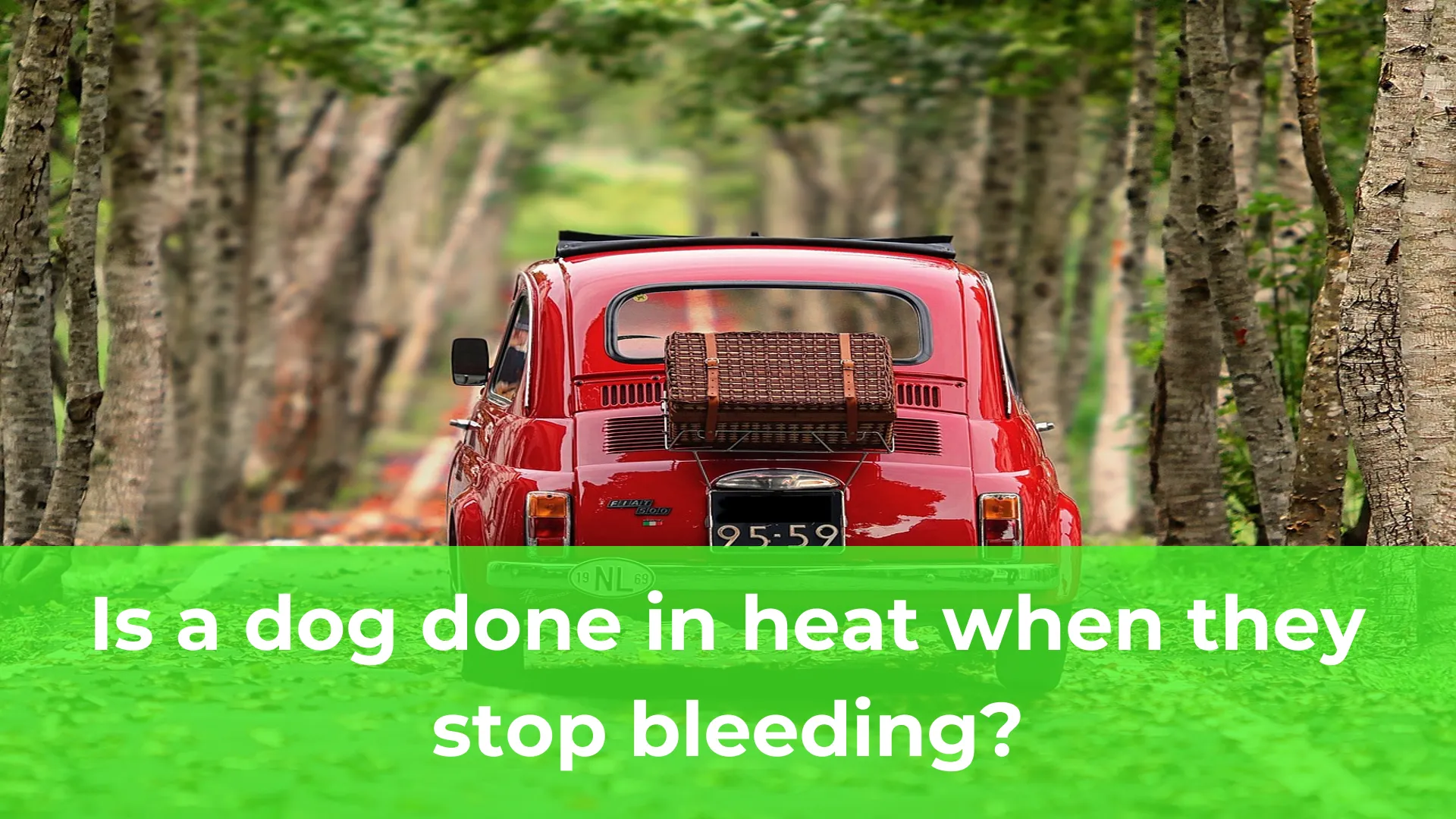Is a dog done in heat when they stop bleeding?
Understanding the reproductive cycle of female dogs is important for dog owners and breeders alike. One common question that arises is whether a dog is done being in heat once she stops bleeding. While the cessation of bleeding is a key indicator, it does not necessarily mean that the heat cycle is over.
A female dog’s heat cycle consists of several stages, including proestrus, estrus, and diestrus. Proestrus is the initial stage, characterized by a bloody discharge and swelling of the vulva. This bleeding typically lasts for about 7 to 10 days, but it can vary from dog to dog. Once the bleeding stops, it indicates the end of proestrus and the beginning of the next phase, estrus.
Estrus, commonly known as the mating phase, is the most fertile period for a female dog. During this stage, the female is receptive to mating and may actively seek out male dogs. The duration of estrus can vary, but it usually lasts for about 5 to 10 days. So, even though the bleeding has stopped, it’s crucial to understand that a dog can still become pregnant during this time if she is exposed to a male dog.
1. Understanding the Heat Cycle in Female Dogs
Understanding the heat cycle in female dogs is essential for dog owners, particularly for those who plan to breed or are responsible for the care of intact female dogs. The heat cycle, also known as estrus, is the reproductive cycle that female dogs go through. It is important to comprehend the different stages of the heat cycle, the signs to look out for, and how to manage a dog in heat to ensure her health and well-being.
The heat cycle in female dogs typically occurs every six to eight months, although this can vary between individual dogs. There are four stages in the heat cycle: proestrus, estrus, diestrus, and anestrus. During proestrus, the initial stage, the female dog’s body prepares for mating but she is not yet receptive to males. As proestrus progresses, the female dog’s vulva may become swollen and she may produce a bloody discharge. It is important to keep a close eye on a female dog in proestrus as she may attract male dogs, even though mating is not yet advisable.
Once proestrus ends, the estrus stage begins. This is when the female dog is receptive to males and can conceive. The signs of estrus include a change in behavior, increased urination, and a change in the appearance of the bloody discharge, which becomes lighter in color. During this stage, male dogs will be highly interested in the female dog and may even show signs of aggression towards each other. It is crucial to take necessary precautions to prevent unplanned mating during this time if breeding is not desired.
2. What Happens When a Female Dog Stops Bleeding During Heat?
When a female dog enters heat, it is a natural and normal part of her reproductive cycle. This period, also known as estrus, typically lasts about three weeks. However, at some point during this time, many dog owners may notice a change—a sudden cessation of bleeding. This can be a bit confusing and concerning, but it is actually a normal occurrence in female dogs during their heat cycle.
Once a female dog stops bleeding during heat, it indicates that she has entered the next stage of her reproductive cycle, known as diestrus. During this phase, the ovaries release mature eggs, and the female is ready for mating. The cessation of bleeding is a clear sign that the dog is no longer in the pre-ovulatory stage. At this point, her body is preparing for the possibility of pregnancy.
It’s important to note that, even when a female dog stops bleeding during heat, she may still be attractive to male dogs. During diestrus, female dogs emit pheromones that make them highly desirable to males. Owners must be vigilant during this period if they do not want their dog to mate. It’s crucial to keep the female dog securely fenced or on a leash when outside to prevent any unwanted encounters.
3. The Different Stages of a Dog’s Heat Cycle
Understanding the different stages of a dog’s heat cycle is essential for every dog owner. This natural reproductive process can be a perplexing and sometimes challenging experience for both dogs and their owners. In this article, we will delve into the various stages of a dog’s heat cycle, including proestrus, estrus, and diestrus, shedding light on what to expect during each phase and offering valuable tips for managing and supporting your furry friend throughout this crucial period.
Proestrus, the initial stage of a dog’s heat cycle, marks the beginning of the reproductive cycle. During this phase, the female dog’s body prepares for potential mating, and hormonal changes are noticeable. Following proestrus is estrus, the period commonly referred to as the “heat” phase. This is when the female dog is most fertile and receptive to mating. Recognizing the signs of estrus is vital for responsible dog owners, as it helps in determining the appropriate time for breeding or taking measures to prevent unwanted pregnancies. Lastly, diestrus is the final stage of the heat cycle, characterized by a decrease in hormonal activity and the body returning to its normal state. Understanding the different stages of a dog’s heat cycle is crucial for ensuring the well-being and reproductive health of your beloved pet.




